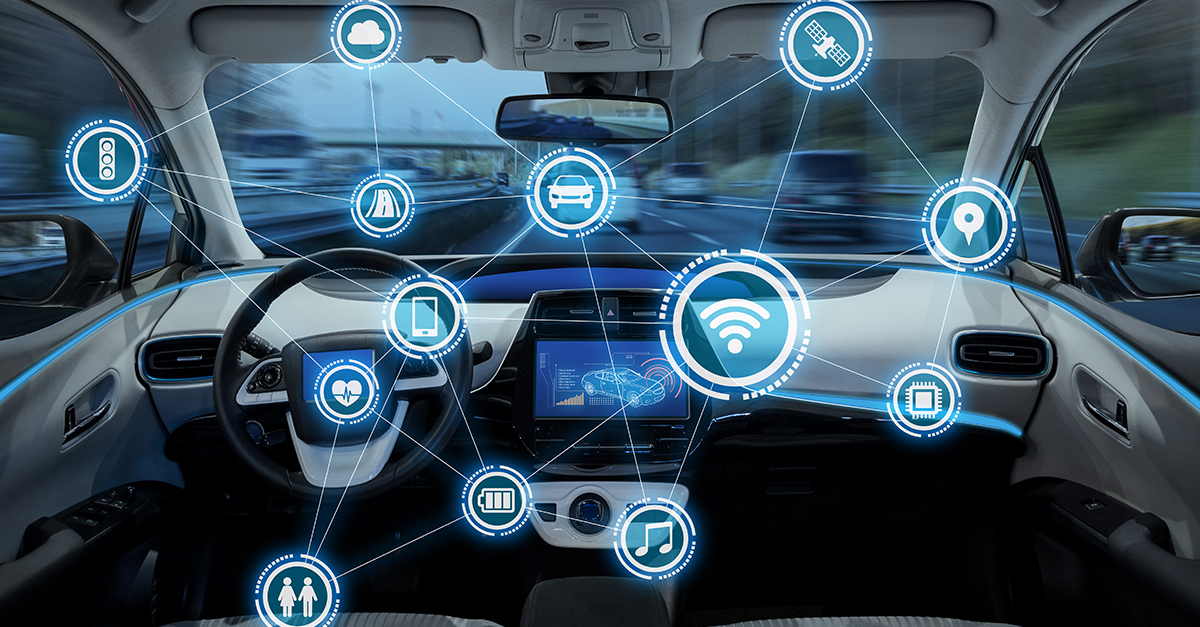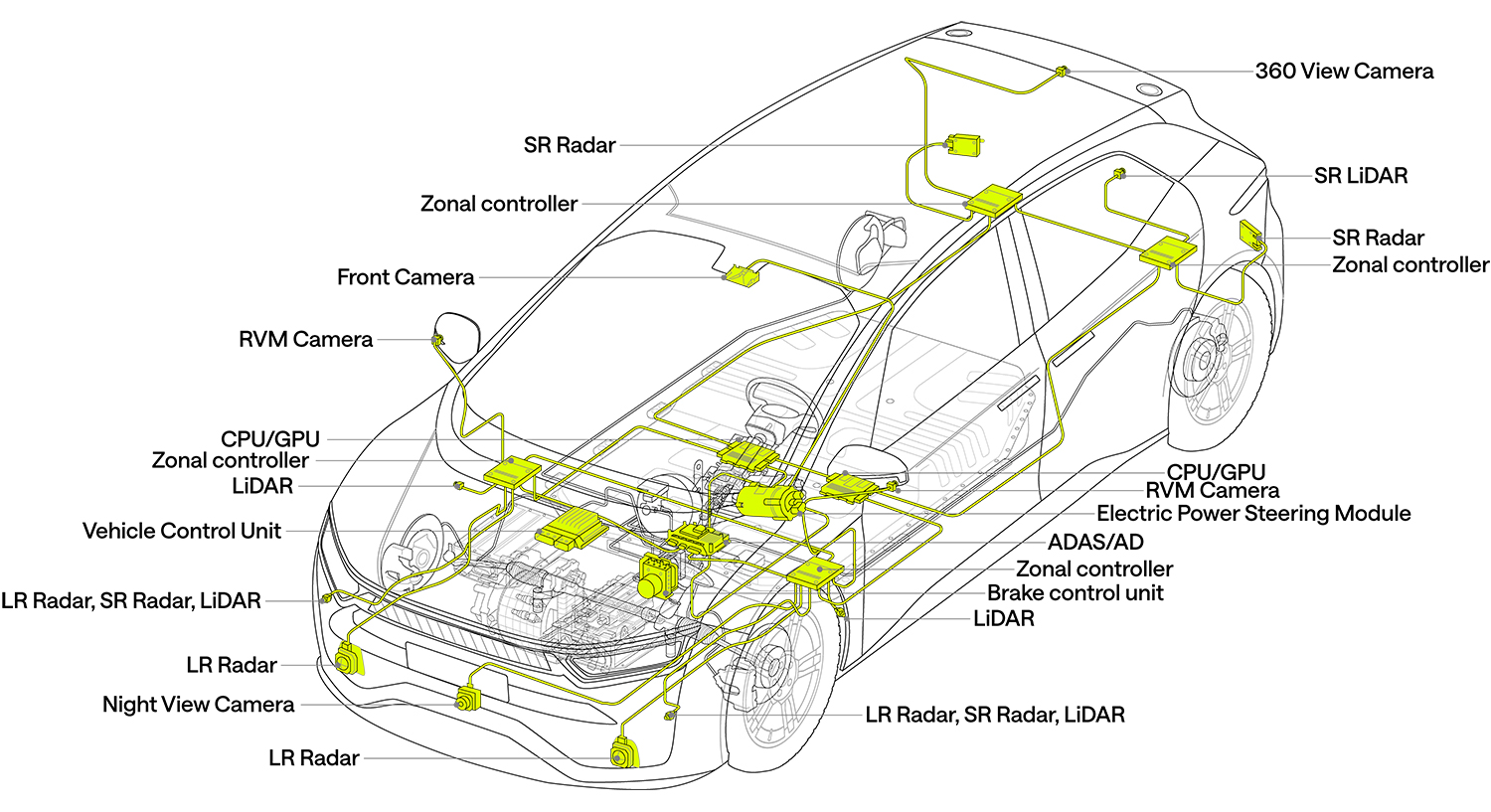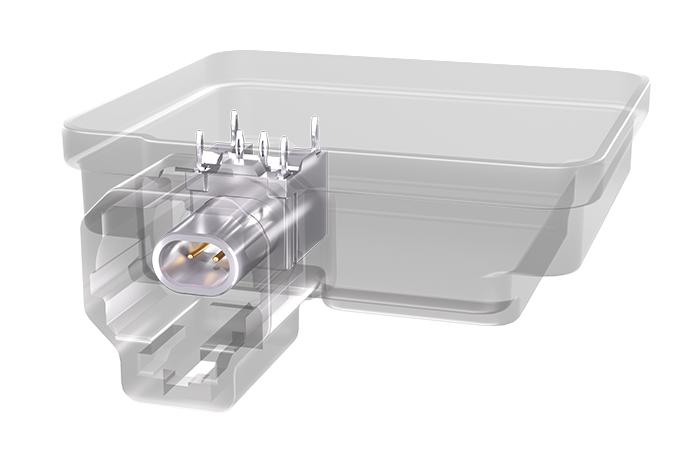Overview
As the e-Mobility space continues to evolve, along with multiple waves of new in-car and connected applications, one arena that will be critical for success is raising the performance, bandwidth, and capabilities of In-Vehicle Networking (IVN) technologies needed to connect everything together.
This article provides an overview of the trends that are driving higher demands on IVN, along with a look at how networking capabilities are evolving to address new requirements.
Trends Impacting In-Vehicle Network Requirements
Only a couple of decades ago, people were marveling about how most cars came with embedded computers, called Electronic Control Units (ECUs), to monitor various functions and provide alerts, such as the ubiquitous “check engine” light.
With the proliferation of new on-vehicle functionality needed to manage electric vehicle (EV) powertrains, the progress toward autonomous driving, and the rise of on-board productivity and entertainment applications, electronics have taken over almost every aspect of today’s cars.

Figure 1 – In-Vehicle Network is needed to connect everything together
Instead of “putting computers into cars” the cars themselves have become “complex, multi-functional, computers on wheels” with literally hundreds of on-board computers needing to communicate across next-gen IVNs.
Power, Control and Safety Functions
While EVs have an order of magnitude fewer moving parts than conventional internal combustion engine vehicles, the reliance on electronics in EVs has multiplied exponentially. There has been a proliferation of sensors and actuators to monitor and manage the powertrain, to control functions like steering or braking, and to provide real-time safety alerts.
Infotainment and the Digital Cockpit
Another key trend that is increasing in-vehicle networking demand is the expanding universe of entertainment and productivity applications that form the Digital Cockpit for both passengers and drivers. Having started with integrated navigation systems and hands-free phone connectivity, these on-board applications are expanding to include passenger wi-fi, video streaming, location-based services (such as nearby attractions or services), and much more.
From a communications perspective, both vehicle control and infotainment applications need access to network connectivity. However, designers need to assure that rider comfort and productivity systems do not impinge on the real-time connections required by the critical vehicle control functions.
Automated Driving
The steady evolution toward new advanced driver-assistance systems (ADAS) and ultimately the introduction of fully autonomous driving capabilities is dramatically raising the bar for integrating higher levels of data along with the need for faster responses and lower latency. When an on-board system needs to integrate data from multiple sensors throughout the vehicle and respond with appropriate actions in real-time, there is no room for networking latency or processing delays.
Many early ADAS applications typically focused on a single sensor type, however subsequent implementations often use inputs from both LiDAR and RADAR, and sometimes also cameras, to gain a more detailed and integrated picture of road conditions, hazards, other cars, pedestrians, etc.
In addition, cabin sensors and driver monitoring sensors using mm wave RADAR are increasingly playing a role to provide enhanced passenger safety and to augment driver assistance applications.
As shown in Figure 2, this proliferation of sensors is a major factor driving the need for greater performance and integration flexibility from in-vehicle networks.

Figure 2 – Proliferation of ADAS applications
Smart Streets and Infrastructure
In addition to off-loading drivers from the existing flows of visual information, automated vehicles are increasingly interfacing with the evolving smart infrastructures, as well as other vehicles, to gather unseen information and react at speeds that go far beyond what a human can handle. The trend toward cars that can “talk with” the surrounding infrastructure is also radically changing the technology landscape.
Connected and automated vehicles have the potential for dramatically improving both safety and the overall efficiency of transportation systems. Specific aspects of these transformational trends are referred to as Vehicle-to-Infrastructure (V2I), Vehicle-to-Vehicle (V2V) and collectively as V2X communications. Here again, support for these V2X applications is placing higher demands on the in-vehicle networking capabilities.
Evolution of IVN and the Role of Ethernet
On-board vehicular networking technologies have evolved significantly to keep pace with and anticipate requirements from the trends described above. In earlier days, in-vehicle communications were built around classic bus-type connectivity such as Controller Area Network (CAN), Local Interconnect Network (LIN), and other event-based protocols. These classic technologies were adequate for monitoring and controlling ECU-based functions and are both well-established and cost-effective. However, the proliferation of multiple new and diverse applications has outstripped the capabilities of traditional event-based communications.
Given the need for both higher bandwidths and standards-based flexibility to work across multiple device types, the automotive industry has turned to proven Ethernet technologies to address new and emerging requirements. Automotive Ethernet is basically an adaptation of the Ethernet physical layer to deliver standard protocols over reduced cabling and high-immunity interfaces to withstand harsh automotive environments while also reducing size and weight.
Automotive Ethernet is transitioning to 10GBASE-T1(IEEE 802.3ch) protocol using a full duplex link over a single twisted pair, which has the advantages of both lower weight and lower cost to manufacture, while delivering speeds up to 10Gpbs as compared to the kilobits per second for conventional CAN or LIN networks.

In our role as a long-time, trusted supplier to the automotive industry and a leading designer of robust connectivity solutions, ENNOVI is at the forefront of innovation on real world implementation of advanced Automotive Ethernet capabilities.
A major advance in this area is the release of ENNOVI’s new connector series for Automotive Ethernet, ENNOVI-Net. ENNOVI-Net has a standardized interface outline in accordance with USCAR, along with a significant improvement.
ENNOVI-Net differ from competing products using this popular interface standard because it incorporates Press-Fit pins, which eliminate the need for the soldering of through-hole pins. This patent-pending innovation thereby completely avoids the need for soldering, simplifies assembly and improves lifecycle reliability.
ENNOVI-Net provides a completely integrated solution with customizable housing options to mitigate shock, vibration, and high operational temperatures. This provides a complete ready-to-use Automotive Ethernet Connector that supports up to 10Gbps data transfer speeds, while eliminating solder hassles, reducing costs, minimizing assembly steps, and improving performance in harsh environments.

Figure 4 – ENNOVI-Net‘s Customizable Front Housing
Summary
Looking back over recent decades, the traditional view of a vehicle as mostly mechanical functionality built around an internal combustion engine has radically changed into a complex integration of advanced electronics and computing built around an all-electric drivetrain.
To assure that all of these advanced electronics and function work seamlessly together for providing a safe, efficient, and enjoyable transportation experience, In-Vehicle Networks have become a critical enabling technology. ENNOVI also is leading the way in the deployment of robust networked sensors including RADAR, LIDAR, and cameras throughout new-gen vehicles (see the references listed in resources below).
As the automotive industry has coalesced around adapting proven Ethernet technologies to provide a new high-performance, robust and extensible solution, ENNOVI is proud to once again play a key innovation role in designing and delivering application-specific solutions.
ENNOVI is a mobility electrification solutions partner with technical expertise and vertically integrated manufacturing capabilities to resolve complex challenges within the EV market. We design, develop and engineer innovative interconnect solutions for battery, power and signal systems that help customers reach an electric future faster, from anywhere in the world.
In addition, our design teams work closely with OEMs to create tightly integrated connectors for sensor modules, controllers, and on-board computers, with goals of reducing size and weight while optimizing performance and reliability.
